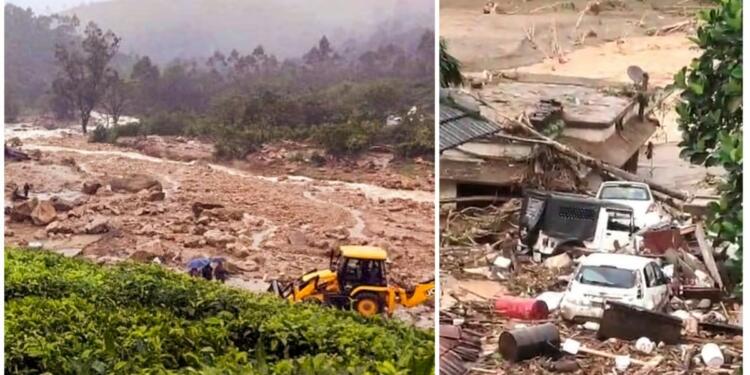In recent years, India has faced numerous natural calamities, highlighting the urgent need for improved disaster preparedness and climate change mitigation. From devastating floods to scorching heatwaves, the country has experienced a wide range of extreme weather events. This article explores some of the most significant natural disasters that have impacted India recently.
Kerala’s Wayanad District: A Tale of Destruction
Wayanad, a picturesque district in Kerala, recently fell victim to catastrophic landslides. The aftermath paints a grim picture: homes in ruins, roads torn apart, and widespread devastation. Rescue teams are working tirelessly to save lives and provide aid. Tragically, nearly 100 people have lost their lives, with over 128 injured. Experts are pointing to climate change as a likely culprit behind these increasingly frequent and severe landslides in India.
Delhi: From Floods to Heatwaves
India’s capital has experienced extreme weather fluctuations. In late July, heavy rains led to flooding in Delhi, claiming the lives of three students in Old Rajinder Nagar. Just weeks earlier, the city had endured scorching heatwaves. These rapid shifts between extreme heat and heavy rainfall underscore the unpredictable nature of India’s changing climate.
Mumbai: Battling the Elements
Mumbai, India’s financial hub, has not been spared from nature’s fury. July brought heavy rains and severe flooding to the city. In May, violent thunderstorms caused a billboard collapse, resulting in at least 14 fatalities. These incidents highlight the vulnerability of India’s urban centers to extreme weather events.
Assam: When Rivers Rage
India’s northeastern state of Assam faced severe flooding in July due to swollen rivers. The floods and subsequent landslides claimed at least 79 lives and displaced thousands. Even wildlife suffered, with over 150 animals, including rare one-horned rhinoceros, drowning in Kaziranga National Park. Major rivers like the Brahmaputra and Kopili surpassed danger levels, putting additional strain on flood control measures.
Cyclones and Glacial Lake Outbursts: India’s Diverse Challenges
India’s geography exposes it to various natural disasters. In December 2023, a severe cyclone battered the southeastern coast, followed by torrential rains in Tamil Nadu that killed at least 31 people. In October 2023, Sikkim experienced its worst floods in over 50 years when a Himalayan glacial lake burst its banks, resulting in 179 deaths and widespread destruction.
Landslides: A Persistent Threat
Landslides continue to pose a significant risk across India. In February 2021, a massive landslide in Uttarakhand claimed over 200 lives and destroyed two hydroelectric projects. More recently, in July 2023, a landslide near Mumbai flattened homes, killing at least 27 people and trapping many others.
Kerala’s 2018 Flood: A Sobering Reminder
The 2018 floods in Kerala serve as a stark reminder of nature’s power. This century’s worst flood in the state claimed 373 lives and displaced 1.2 million people to shelter camps. With 40% more rainfall than average, Kerala’s experience underscores the need for improved flood management and climate resilience strategies across India.
As India grapples with these recurring natural disasters, it becomes increasingly clear that addressing climate change and enhancing disaster preparedness must be top priorities. The country’s diverse landscape and large population make it particularly vulnerable to extreme weather events, necessitating a comprehensive approach to safeguard lives and infrastructure in the face of nature’s unpredictability.
ALSO READ: Why Kerala Is Vulnerable to Landslides and Other Natural Calamities?































